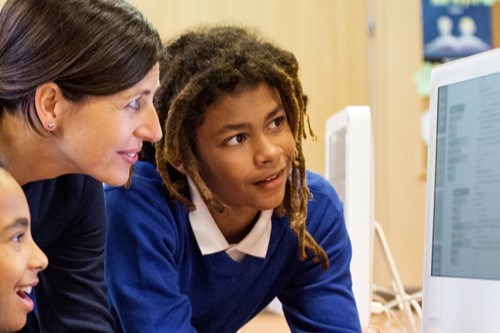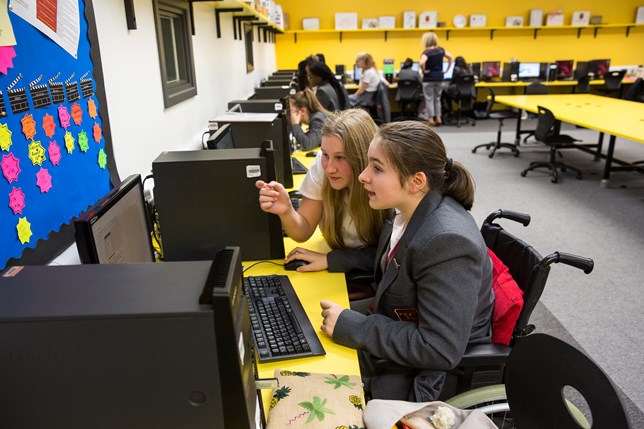Inclusive Computing
At CAS, we believe every learner deserves access to a high-quality computing education that helps them thrive in a digital world. Inclusion is at the heart of that vision. This page brings together resources and ideas to support inclusive practice across a range of areas. Whether you’re looking for strategies to engage underrepresented groups, make your curriculum more relevant, or ensure every child feels confident and valued, you’ll find practical guidance and inspiration here.
Girls in Computing
The resources and webinars below offer tips, strategies and discussion to tackle the gender balance in computing:
Inspiring Girls into Tech
This slide deck was originally developed to support BCS volunteers when visiting schools to promote 'Girls in Tech.' It has been modified to allow teachers to use it to celebrate the achievements of women in tech, explore the role of tech in a range of jobs, and inspire girls to study tech subjects.
I belong
The I Belong programme is designed to support you in Key Stage 2 to address early gender stereotypes in computing and help all pupils—particularly girls—develop a strong sense of belonging in the subject. Research shows these stereotypes can start forming as early as Key Stage 1, shaping children’s confidence and future subject choices. This programme provides you with practical tools, gender-responsive teaching strategies, and access to diverse role models to ensure girls can see themselves as capable and welcome in computing. By reflecting on classroom practice and incorporating enrichment opportunities such as clubs and competitions, you can create an inclusive learning environment where every child feels valued and empowered to succeed in computing.
Girls Into Computing
This resource offers tips from CAS teachers, parents and academics to those who are teaching or working in outreach to encourage girls to get involved with computing.
Women in Computing lesson
This ready-to-use lesson introduces a diverse group of women in computing and helps challenge any misconceptions about those who choose this career path. Pupils are encouraged to think about the contribution that women can bring to computing and the reasons why less than 25% of the people working in computing in the UK today are women.
Computing Trips & Educational Visits
Educational visits are a great way of providing a 'hook' for girls to want to explore computing further and they provide a great opportunity for girls to see collaborative working environments and meet inspirational role models.
Girls in Computing Webinars
Hear from women in industry and education leadership roles as they discuss strategies to tackle the gender balance in Computing:
Hayley Leonard, Research Manager from RaspberryPi discusses how pyschological, social, cultural and other factors impact the gender balance in computing and presents practical ways to apply these findings in the classroom.
A panel of expert teachers discuss strategies to raise the profile of STEM in school, particularly with girls.
CAS Virtual Showcase 2021 – Encouraging Girls to Take Computing
Expert panellists from a range of industries including financial services, marketing and logistics discuss the gender issue in Computing
Diversity & Inclusion
The resources and webinars below offer tips, strategies and discussion to help you work towards an inclusive Computing classroom:
Programming in an engaging and inclusive curriculum
Download presentation resources from this session at the 2016 CAS Conference. This session suggested 6 ingredients to consider using when planning a project or schemes of work so that every student can enjoy making progress in computing regardless of gender, race, religion, ability or background.
Diversity and Inclusion Webinar
Join panellists from a range of higher education establishments, RaspberryPi and Microsoft as they discuss approaches to develop good practice and create an inclusive learning environment.
Diversity & Inclusion Resources
These resources specifically focus on how we can promote diversity and inclusion within our subject and the resources we use:





